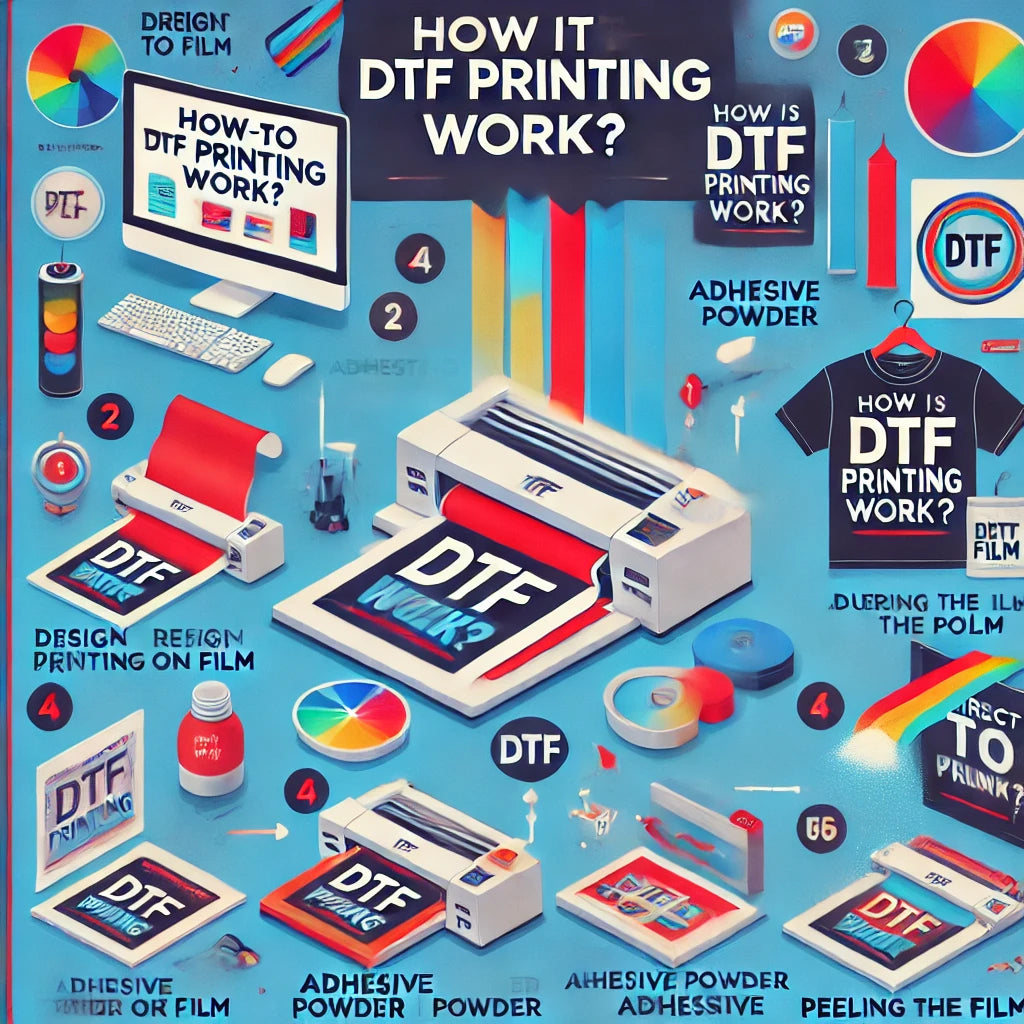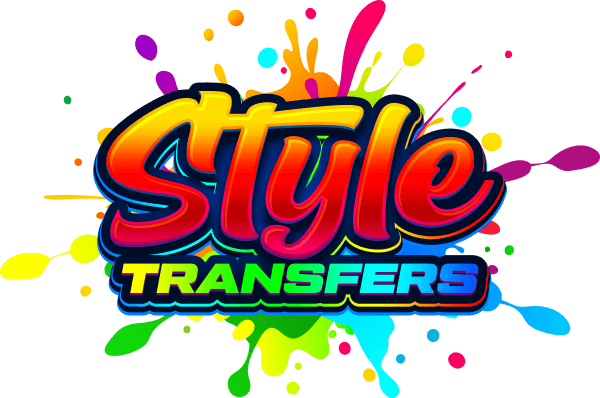
How Does DTF Printing Work
Share
DTF (Direct-to-Film) printing is a step-by-step process that transforms digital designs into durable and vibrant transfers for garments and other surfaces. Here's how it works:
1. Design Creation
- The process begins with creating a digital design using graphic design software like Adobe Photoshop, Illustrator, or CorelDRAW.
- High-resolution files (300 DPI or more) ensure sharp and detailed prints.
- The design may include CMYK colors, gradients, and intricate details.
2. Printing on Transfer Film
- The design is printed onto a special PET (Polyethylene Terephthalate) film using a DTF printer.
-
Ink Used:
- A combination of CMYK (for colors) and white ink (to create a base layer for opacity and vibrant results).
-
Printer Type:
- Specialized printers equipped for DTF printing are used to ensure precision and even application.
3. Adhesive Powder Application
- A fine adhesive powder is sprinkled over the wet ink on the film.
- The powder adheres to the ink and serves as the "glue" that bonds the design to the fabric during heat pressing.
-
Key Points:
- Excess powder is shaken off to ensure a clean transfer.
- The adhesive powder must evenly coat the design.
4. Curing the Powder
- The adhesive powder is heated to melt and activate its bonding properties.
-
Curing Process:
- This can be done using a heat press or a curing oven at controlled temperatures.
- The powder solidifies to form a durable adhesive backing for the design.
5. Heat Transfer to the Fabric
- The cured film is placed onto the fabric with the design facing down.
- A heat press applies high pressure and heat (typically 160–180°C or 320–356°F) for 10–20 seconds.
- This heat activates the adhesive, transferring the design from the film to the fabric.
6. Peeling the Film
- After pressing, the film is peeled away from the fabric, leaving the design firmly attached.
-
Peel Type:
- Hot Peel: The film is removed while still warm.
- Cold Peel: The film is removed after it cools completely.
7. Final Press (Optional)
- A secondary heat press may be applied to ensure better adhesion and a smoother finish, improving durability and feel.
Key Features of DTF Printing
- Versatility: Suitable for almost all fabric types (cotton, polyester, blends, leather, etc.).
- Durability: Designs resist cracking, peeling, and fading.
- Vibrancy: Colors remain bright and sharp even after multiple washes.
- No Pre-Treatment Needed: Unlike DTG (Direct-to-Garment) printing, pre-treatment of the fabric isn't required.
DTF printing is a fast-growing technology due to its flexibility, affordability, and superior print quality, making it an ideal choice for custom apparel and merchandise businesses.
